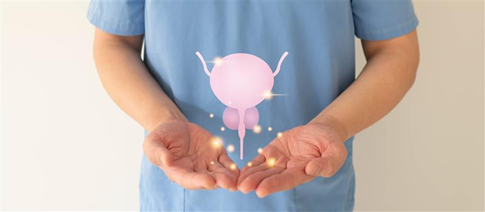Bladder cancer can be a scary diagnosis, but knowing about it early can make a big difference. Bladder cancer caught early means better treatment options and outcomes. It's a common cancer affecting many worldwide. Both men and women can get it, but men are more often diagnosed. This blog is for everyone who wants to understand the basics of early stages of bladder cancer, including how it starts, who’s at risk, and what symptoms to watch for.
Understanding the Anatomy of the Bladder: Where Cancer Begins!
The bladder is a hollow organ that holds urine before you urinate. It's stretchy, expanding and contracting as it fills with urine from the kidneys. Cancer in the bladder often starts in the inner lining. This is where cancer cells can begin to grow uncontrollably. When these cells grow, they can form a mass or tumor, which might make it tricky to urinate normally. Knowing where cancer begins helps doctors find it early, making it easier to treat.
Major Risk Factors for Early Stages of Bladder Cancer
Several factors can increase the risk of developing bladder cancer. Smoking cigarettes plays a significant role. Tobacco is full of harmful chemicals that can harm the bladder. Another risk includes long-term exposure to certain industrial chemicals. Some people may also have genetic factors that make them more vulnerable. Older age and being male are additional risk factors, though anyone can develop first-stage bladder cancer. By knowing these risks, you can take steps to reduce your chances of getting this cancer.
Early Warning Signs and Symptoms of Bladder Cancer
Early symptoms can be subtle but important to catch.
Common symptoms include:
- Blood in urine: This is the most obvious sign. Often, it might not hurt but can range from light pink to deep red tint in urine.
- Frequent urination: Feeling like you need to go more often, even without drinking more fluids.
- Pain during urination: Discomfort or a burning feeling can be a sign.
If you spot these stage 1 bladder cancer symptoms, it’s wise to consult a doctor. They might do some tests and if the first stage of bladder cancer is confirmed, acting fast is key. Early diagnosis often means better treatment success.
Diagnosing and Treating Stage 1 Bladder Cancer: What to Expect?
Doctors have several ways to diagnose early stages of bladder cancer. Common tests include urine tests, cystoscopy (a tiny camera checking inside the bladder), and imaging tests like CT scans. Once diagnosed, treatment usually involves a combination of surgery and sometimes, medication. Surgery can help remove tumors. Early intervention is crucial because it prevents the cancer from spreading, making treatment for stage 1 bladder cancer more effective.
Proactive Lifestyle Changes to Lower Bladder Cancer Risk
Taking steps to live healthily can lower the risk of early stages of bladder cancer. Here are simple changes you can make:
- Quit smoking: This can greatly reduce your risk.
- Eat a balanced diet: Plenty of fruits and veggies can help your body fight against cancer.
- Regular check-ups: Seeing a doctor regularly can help catch any early warning signs.
Making these changes is about staying healthy and reducing risks. Being proactive with your health can make a difference in prevention.
Taking charge of your health and being informed is empowering. Understanding the beginning signs and treatment options for early stages of bladder cancer can help you or someone you know. By staying vigilant and consulting your doctor at the first signs, the journey with bladder cancer can be less daunting.
If you're experiencing any symptoms or are concerned about bladder cancer, don't wait—early detection is key. Aurum Men's Health is here to guide you with expert care and support. Schedule your consultation today to take charge of your health and get the information you need for a healthier future.




